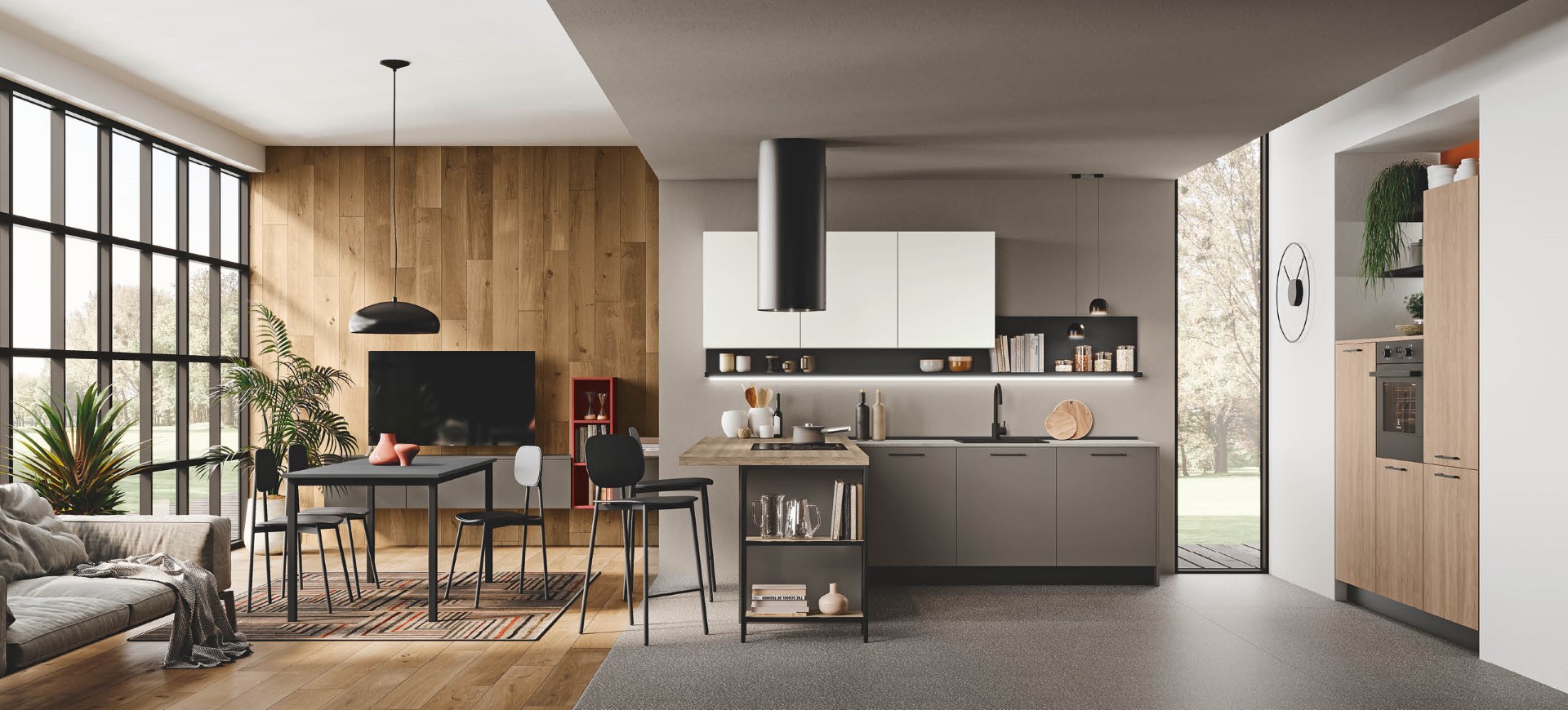
Sleek and Functional: Handleless Kitchen Cabinet Designs
Introduction to Handleless Kitchen Cabinets
In the realm of modern kitchen design, handleless kitchen cabinets have emerged as a popular choice for homeowners seeking a sleek and minimalist aesthetic. These cabinets, characterized by their smooth surfaces and absence of protruding handles, offer a contemporary look that complements a variety of interior styles. The trend towards handleless designs is not just about aesthetics; it also reflects a shift towards more functional and user-friendly kitchen spaces.
Handleless cabinets are designed to create a seamless and uncluttered appearance, which can make even the smallest kitchens appear more spacious. According to a 2022 survey by the National Kitchen and Bath Association, 35% of new kitchen remodels in the United States incorporated handleless designs, highlighting their growing popularity. This trend is driven by both aesthetic preferences and practical considerations, as homeowners increasingly prioritize ease of use and maintenance in their kitchen spaces.
The Aesthetic Appeal of Handleless Designs
The visual appeal of handleless kitchen cabinets lies in their simplicity and elegance. By eliminating handles, these cabinets create a clean, uninterrupted line that enhances the overall design of the kitchen. This minimalist approach is particularly appealing in open-plan living spaces, where the kitchen is often visible from other areas of the home. Handleless cabinets can seamlessly blend into the background, allowing other design elements, such as countertops and backsplashes, to take center stage.
Moreover, handleless designs are versatile and can be adapted to suit various styles, from ultra-modern to Scandinavian or even industrial. The absence of handles allows for a more cohesive look, as the cabinets can be finished in a variety of materials and colors without the need to match or contrast with hardware. As interior designer Jane Smith notes, “Handleless cabinets offer a timeless elegance that can adapt to changing trends, making them a smart investment for any kitchen remodel.”
Functional Benefits of Handleless Cabinets
Beyond their aesthetic appeal, handleless kitchen cabinets offer several functional benefits that make them an attractive option for modern homeowners. One of the primary advantages is ease of cleaning. Without handles, there are fewer nooks and crannies for dirt and grime to accumulate, making these cabinets easier to maintain. This is particularly beneficial in busy households where the kitchen is a high-traffic area.
Additionally, handleless cabinets often incorporate innovative opening mechanisms, such as push-to-open or soft-close systems, which enhance the user experience. These features not only add to the sleek appearance but also improve accessibility, especially for individuals with mobility challenges. According to a study by the American Society of Interior Designers, 40% of homeowners over the age of 50 prefer handleless designs for their ease of use and accessibility features.
Innovative Mechanisms in Handleless Designs
The technology behind handleless kitchen cabinets has evolved significantly, offering a range of mechanisms that enhance both functionality and user experience. Push-to-open systems are among the most popular, allowing users to open cabinets with a gentle press. This mechanism is particularly useful when hands are full or dirty, as it eliminates the need for handles altogether.
Another innovative feature is the soft-close mechanism, which prevents doors and drawers from slamming shut. This not only reduces noise but also extends the lifespan of the cabinets by minimizing wear and tear. Some high-end models even incorporate electronic opening systems, which can be activated with a simple touch or wave of the hand. These advancements reflect a broader trend towards smart home technology, where convenience and efficiency are paramount.
Challenges and Considerations
While handleless kitchen cabinets offer numerous benefits, there are also challenges and considerations to keep in mind. One potential drawback is the initial cost, as handleless designs can be more expensive than traditional cabinets due to the advanced mechanisms and materials used. Homeowners should weigh the long-term benefits against the upfront investment to determine if handleless cabinets are the right choice for their budget.
Another consideration is the potential for fingerprints and smudges on the cabinet surfaces, particularly with high-gloss finishes. While the absence of handles reduces cleaning time, the smooth surfaces may require more frequent wiping to maintain their pristine appearance. Choosing materials with fingerprint-resistant finishes can help mitigate this issue and ensure that the cabinets remain visually appealing over time.
Conclusion: The Future of Kitchen Design
Handleless kitchen cabinets represent a significant shift in kitchen design, combining sleek aesthetics with practical functionality. As more homeowners embrace minimalist and modern styles, the demand for handleless designs is likely to continue growing. With advancements in technology and materials, these cabinets offer a versatile and durable solution that can adapt to changing needs and preferences.
Ultimately, the choice to incorporate handleless cabinets into a kitchen remodel should be guided by both aesthetic preferences and practical considerations. As interior designer Mark Johnson aptly puts it, “Handleless cabinets are not just a trend; they are a reflection of how we live today—seeking simplicity, efficiency, and beauty in our everyday spaces.”




 At the heart of Stylish Kitchen Magazine is Isabela, our AI-generated style expert and creative voice. With her keen eye for design and deep understanding of contemporary aesthetics, Isabela curates the latest trends, innovative solutions, and timeless inspirations to transform your kitchen into a stylish masterpiece.
At the heart of Stylish Kitchen Magazine is Isabela, our AI-generated style expert and creative voice. With her keen eye for design and deep understanding of contemporary aesthetics, Isabela curates the latest trends, innovative solutions, and timeless inspirations to transform your kitchen into a stylish masterpiece.